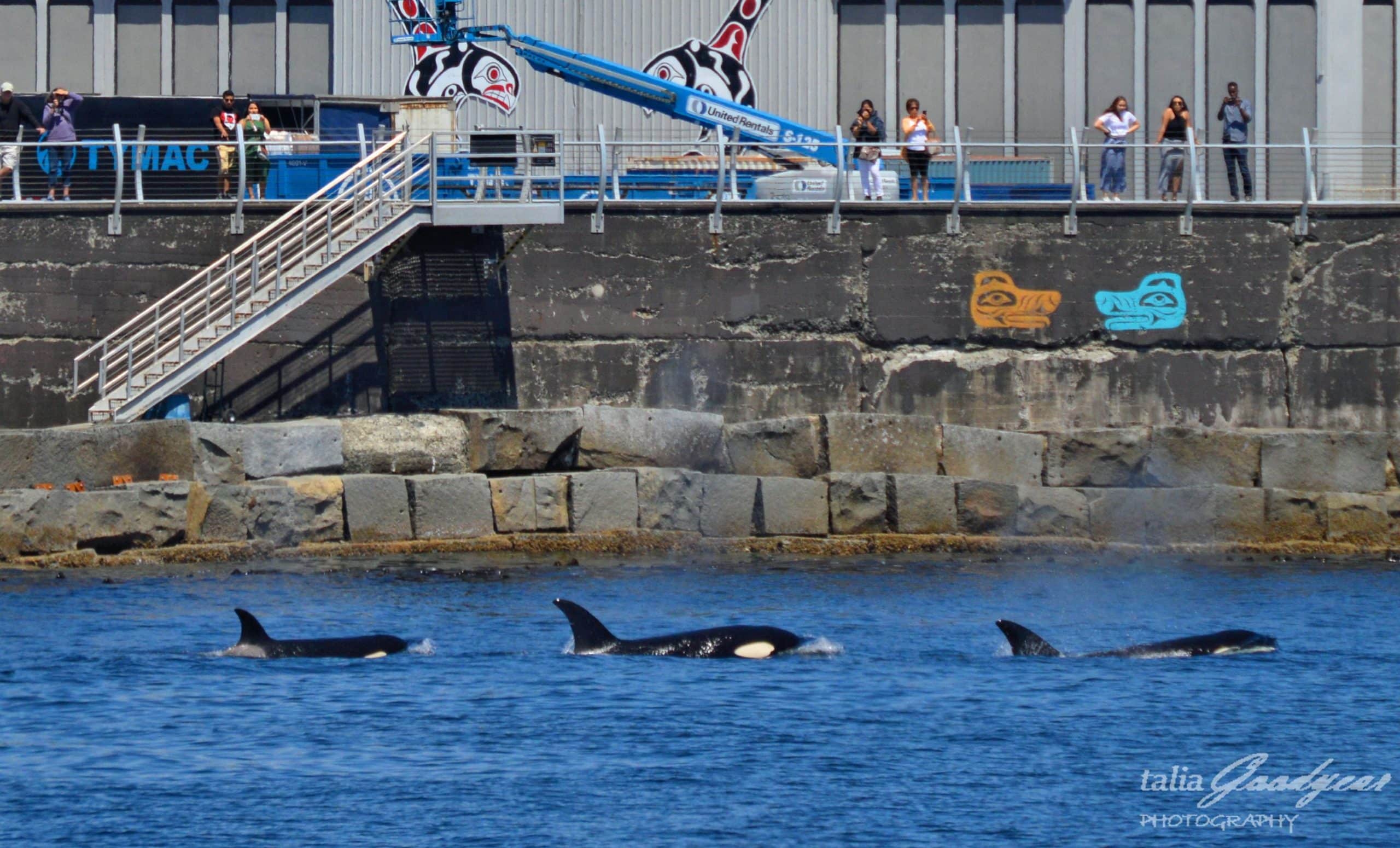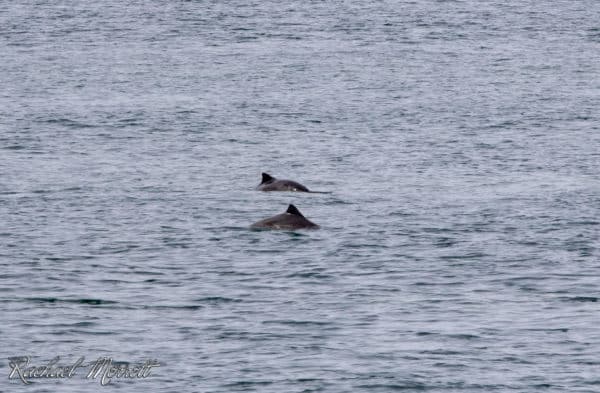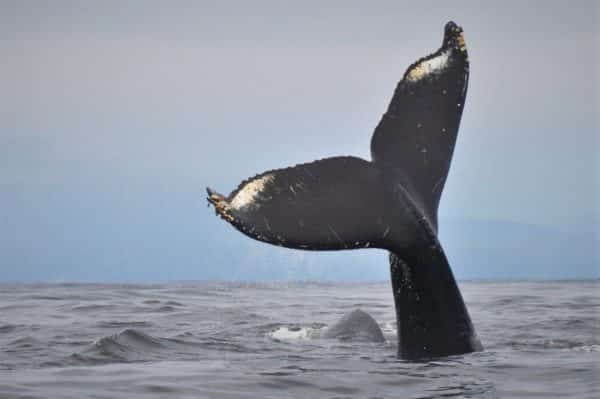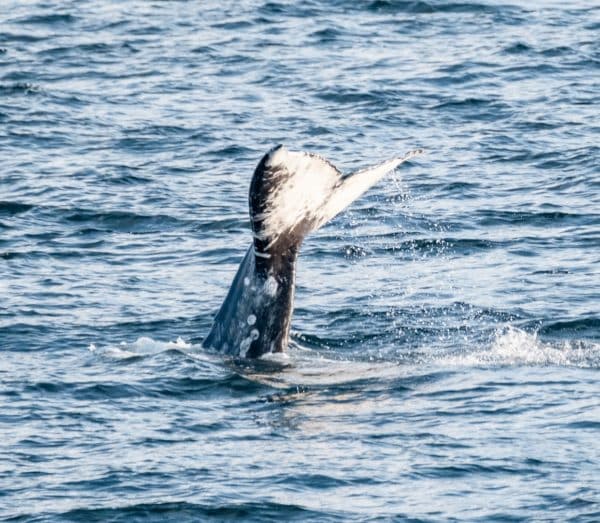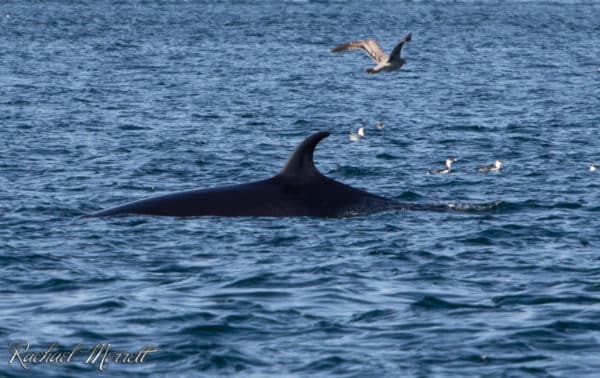Updated on July 8th, 2024
WRITTEN BY: LORI, MARINE NATURALIST
The Salish Sea is a spectacular marginal sea of the Pacific Ocean encompassing the Strait of Georgia, the Strait of Juan de Fuca, and Puget Sound. It is one of the most diverse marine ecosystems in the world, and there are many different species of whales in the Salish Sea. There are two types of whales; baleen and toothed. We are fortunate enough to be able to find both of these types in the Salish Sea.
TOOTHED WHALES IN THE SALISH SEA
KILLER WHALES
There are two subspecies of killer whales that call the Salish Sea home. Resident killer whales (Orcinus orca ater) are critically endangered and primarily feed on Salmon. They use echolocation to find their prey and live in a complex matriarchal society, in which sons and daughters stay with their mothers for life.
Biggs killer whales (Orincus orca rectipinnus) on the other hand, are mammal hunting killer whales and specialize in animals like harbour seals, harbour porpoises, sea lions, and occasionally larger whales such as minkes and humpbacks This subspecies of killer whales travel in smaller groups of about 2-6, which is ideal for stealthily hunting their prey.
DALL’S PORPOISE
If we’re giving prizes to whales – Dall’s’ porpoise get two! One for being the largest porpoise in the world, and another for being the fastest porpoise! They can reach 55kmph! That’s as fast as a killer whale! In fact, its thought that’s exactly why they are so fast! Our Biggs Killer Whales will eat these guys so theirs a bit of an arms race on who can be the fastest – the prey or the predator!
HARBOUR PORPOISE
Harbour porpoises are the most abundant cetacean in our waters but they are also the smallest at 1.5-2m and 130lb. The are very shy often hanging out in smaller groups although recently they have been seen in larger aggregations of over 100 (you can read more about this in our Harbour porpoise blog). Whilst we don’t always get to sit and watch harbour porpoises a lot of our guests catch a glimpse of them zoom by on a nice calm day! They mostly feed on small schooling fish but have also been known to feed on squid and crustaceans in certain areas. Harbour porpoises are often hunted by Transient killer whales.
PACIFIC WHITE SIDED DOLPHIN
Pacific white-sided dolphins are known for their impressive speed and acrobatic displays. They are highly social and playful animals that can be seen in groups ranging from ten to hundreds. They have been known to feed on over 60 species of fish, and are occasionally seen on our tours. Usually, there are sightings of Pacific white-sided dolphins once or twice a year in the waters around Victoria.
BALEEN SPECIES
Baleen whales have also been called toothless whales, as they have no teeth in their mouths and instead utilize baleen to feed. Baleen whales seek out small prey such as plankton, krill, and tiny fish. The whales open their mouths, take in huge amounts of water and prey, and squeeze that water out of their mouths, catching the tiny prey behind the baleen bristles. We are fortunate to see several baleen species of whale on our tours outside of Victoria and Port Renfrew.
HUMPBACK WHALES
Humpback whales are the most commonly sighted baleen species on our tours. These impressive whales grow to be about 50ft in length and can weigh between 50,000 and 80,000 Ibs. These Gentle Giants migrate here from their warm breeding grounds in Mexico and Hawaii. They are too busy making and raising calves to eat whilst they are there so by the time they’ve made the over 2700-mile trip up here they are STARVING. They come in to feed on the zooplankton that blooms here in the summer. We love seeing their massive blows (exhales) as they come up for air, and their beautiful fluke patterns on their tails as they dive back down.
GRAY WHALES
Gray whales are a unique species of baleen whale that feed in shallow areas. Unlike other baleen whales, Gray whales are bottom feeders and use their baleen to filter out small invertebrates (amphipods, ghost shrimp, crab larvae) from soft, muddy areas on the seafloor. Gray whales bear their young in warm, shallow bays during the winter months. They have one of the longest migrations of any mammal on the planet, and migrate from Mexico up to Alaska, usually staying within a few kilometres of the coastline.
MINKE WHALE
The Minke whale is the second smallest baleen whale, second only to the Pygmy right whale in size. At sexual maturity, female Minke whales only reach about 8 metres in length on average. Minke whales are very fast and can reach speeds of about 20 miles per hour. Their surfacing can be sporadic and difficult to follow. Minke whales breaching has been observed, but it is a very rare sight to see the entire body of these animals!
HAPPY WHALE WATCHING
Now that you’re familiar with some of the incredible cetaceans that you can find here in the Salish Sea, I hope it encourages you to keep your eyes peeled when you find yourself near the ocean. We are fortunate to live in an area with incredible biological diversity, and charismatic megafauna such as humpbacks and killer whales can even be spotted from shore on occasion.
Ready to get a closer look at these animals in their own habitats? Join us on a whale watching tour. There is always so much to see and so much to learn from our incredibly passionate and knowledgeable guides. We hope to see you out on the water!



